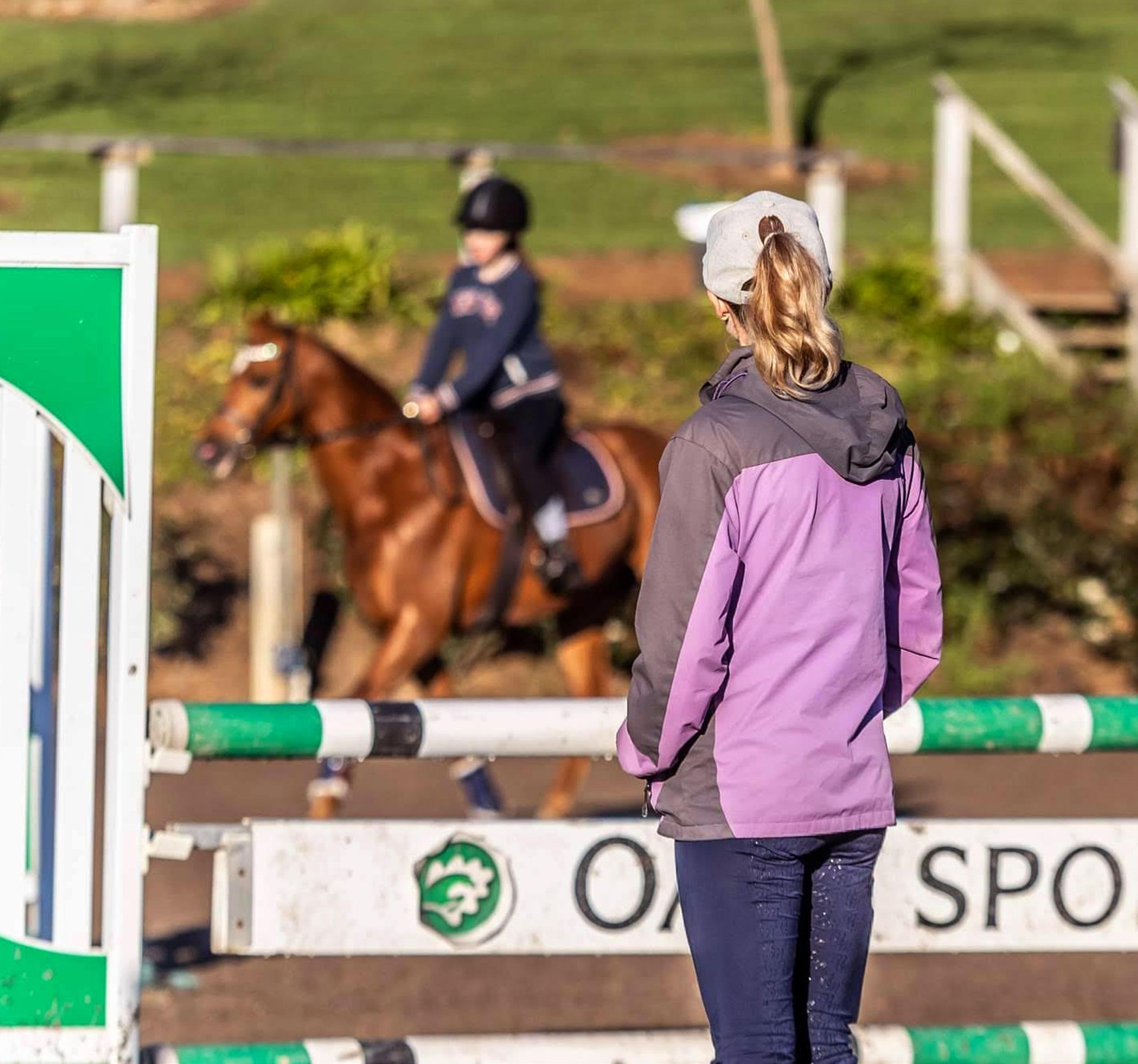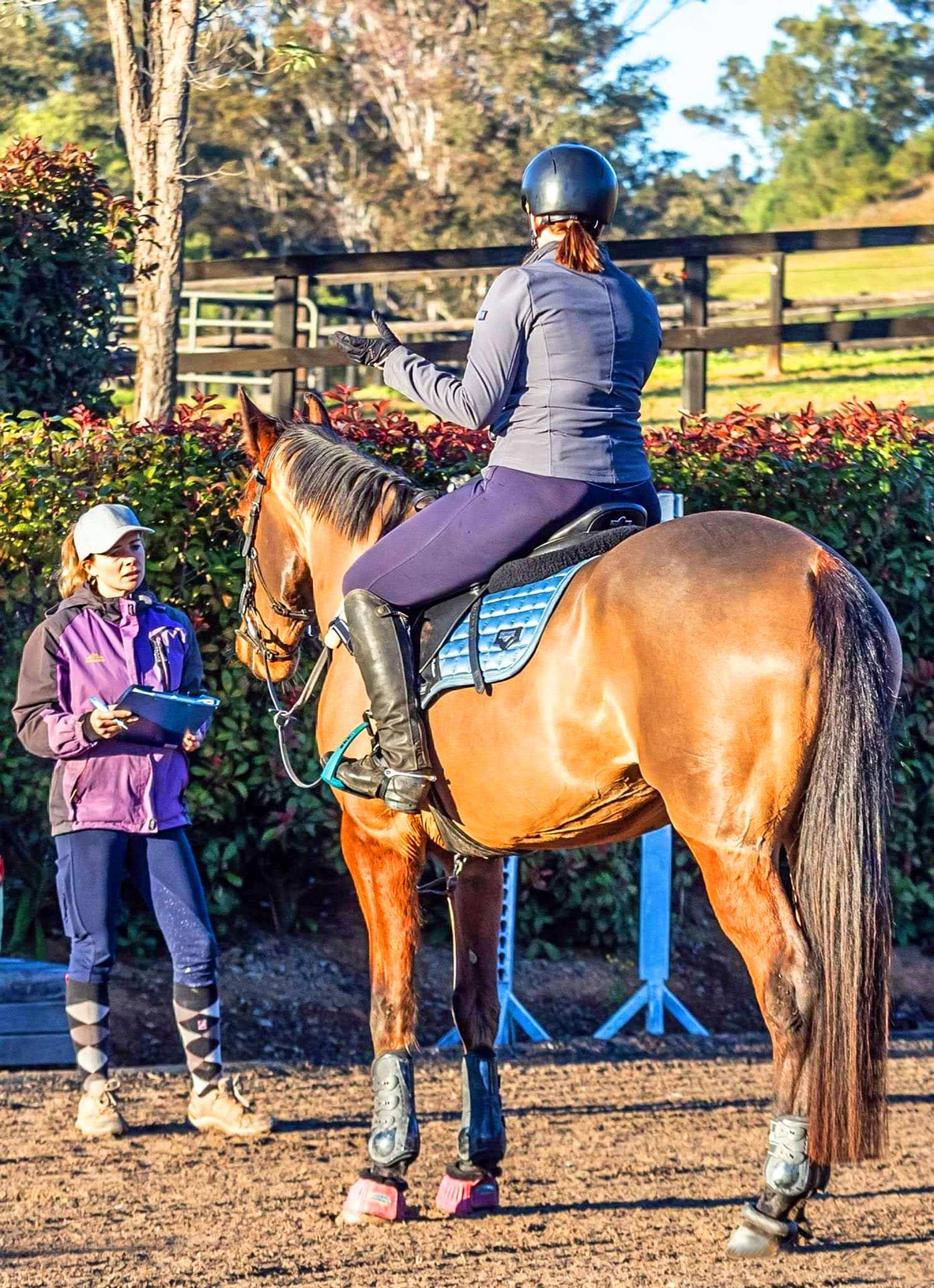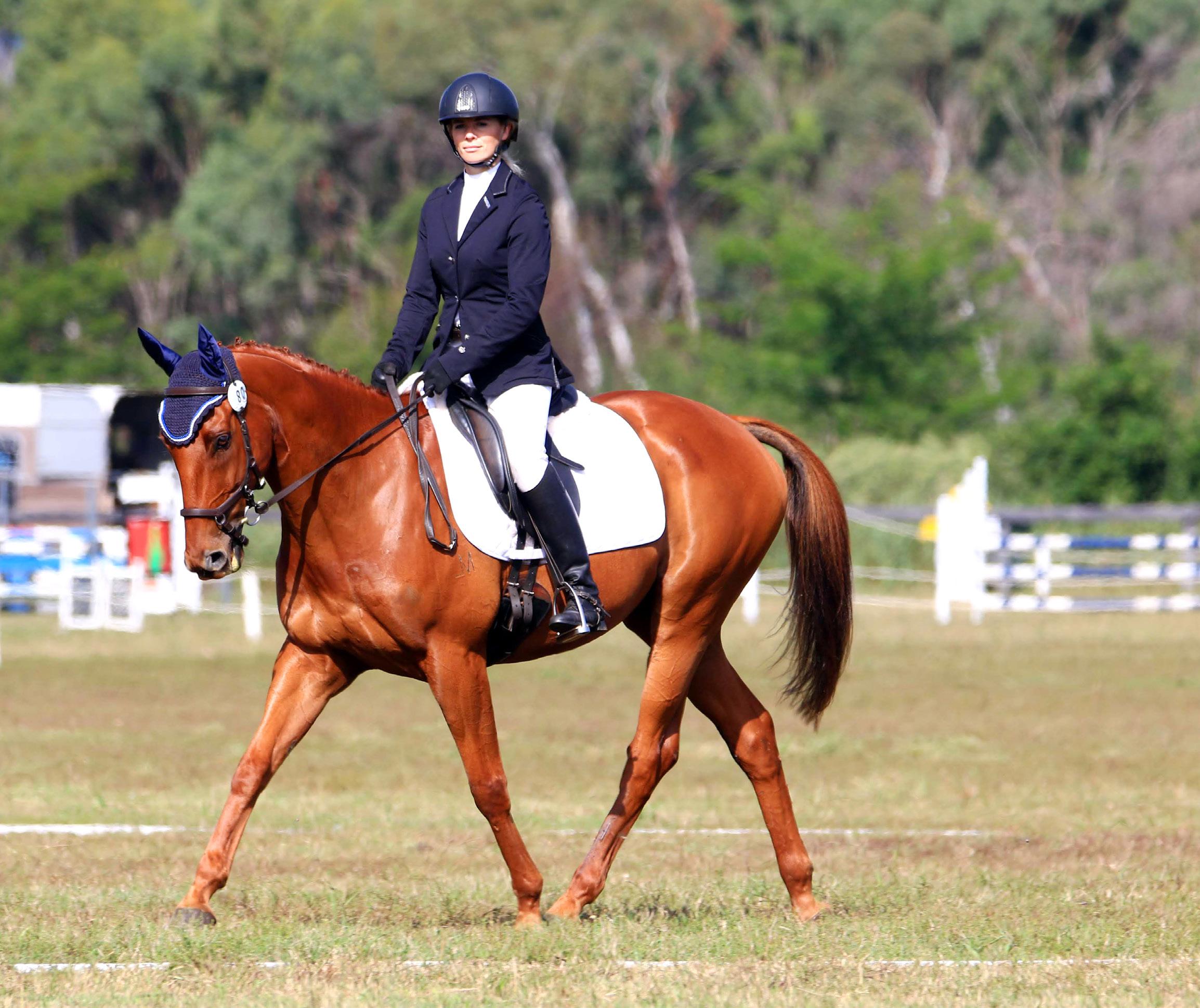
8 minute read
Feature: Creating Confidence
FEATURE
Creating confidence
With 19 years coaching experience CHRISTINE ARMISHAW, a 1* event rider and EA Level 1 Coach, knows a thing or two about rider confidence: how it gets lost, and where to find it.
As women returning to riding, we all remember the way it used to feel when we were fearless teenagers. Jumping whatever we could find lying around, racing friends and galloping across fields or down the beach. If somewhere along the way you happened to come unstuck from your mount, you just got up, dusted yourself off and hopped back on.
Then, when you returned to riding after a long break, be it due to career commitments, having children or perhaps coming back after an injury, you discovered a new mental component that apparently needed to be addressed.
Having realised we weren’t invincible, our older, wiser and more forwardthinking brains seemed suddenly pre-occupied with the future. If we came off the horse and hurt ourselves, we had other responsibilities that may be affected, like work, kids and general life duties. These common thought patterns turn us from gung-ho girls, into timid and cautious ‘what if-ers’.
I personally have experienced this phenomenon more than once, after coming off horses and breaking my arm and leg on separate occasions, and even more so after having each of my two children. I only stopped riding for the later part of both pregnancies and was back in the saddle a few short months after my babies were born, so in the grand scheme of things I didn’t have a large amount of time off. However, it wasn’t necessarily the length of time that was the biggest culprit, but the added level of responsibility I found myself laden with upon becoming a mother.
Nerves kicked in and I would start to feel apprehensive right before mounting up. I was tentative about going too fast and a basic 60cm vertical out in my paddock seemed more like a Grand Prix show jump fence! One time, while jumping on my Thoroughbred Fanta, I got nervous and tensed up. We awkwardly jumped the fence and I promptly fell off over his right shoulder. I wasn’t hurt and Fanta just stopped and stood there looking at me on the ground - I think we were both as surprised as each other and I was cross with myself. That was a really significant moment for me. What made it a turning point was that yes, I acknowledged I was experiencing a level of anxiety, but no, I would not allow it to dictate or define me.
That’s where getting on top of your nerves begins, with acknowledging the feelings you are experiencing, then making a plan to move forward. Here are my top tips for dealing with nerves and re-building the confidence you know you had. Who knows? Maybe you’ll even find more than you had before.
Make a plan
Before you get on, decide what it is you are going to do in this ride. Maybe you’ll practise flatwork, play over trotting poles, or do some jump training. Whatever it is, decide at the start. Then, make micro plans during your ride to stop yourself from aimlessly riding around in circles, waiting for something to happen! It can be as simple as deciding to walk half a circle, weave through some cones, then trot back.
Did it go well? If yes, great, if not, that’s OK. But now you can try again and you have a way to evaluate your progress. Always think one or two steps further ahead in your ride than where you are right now. This one tip alone will make any ride much more productive and is great for building confidence, as it keeps your brain engaged and thinking ahead.
Breathe a song
One of the first things to happen when we get nervous is our breathing gets shallow, leading to our body becoming tense and stiff. Your brain is deprived of oxygen and you can’t think properly. A fun way to keep yourself breathing as you ride is to sing a song out loud. One of my riders, Carina, sings a tune as she mounts up and continues the song for the first couple of laps around the arena. She finds it incredibly beneficial for beating her pre-ride jitters and now does it every time she gets in the saddle. The reason it works so well is simple – you must breathe to sing. It keeps the oxygen flowing, while allowing your brain to get focused on something other than ‘what if’ style thoughts. The flow-ons are that your body also starts to relax, and it can even help relax your horse.

ABOVE: With Myal High El Capitano on the downhill and over the wagon at Camden (Image by Tom Testone Photography). LEFT: Christine coaching at her Oaks Sport Horses jump clinic (Image by Melissa Goodson, Snapshotaustralia).


Do it until it’s boring
When you’re trying to push yourself to level-up, but you’re feeling the fear of the next step, wait. When my client Sandy was feeling anxious about trotting her mare, even though she really thought she should be doing it by now, my advice was this: just walk. Walk circles, lines, figure eights, through cones and over poles, until all that walking gets boring. Taking the pressure off yourself subconsciously opens your mind up.
Interestingly, once you’ve done something for long enough with repeated success, you can’t help but want to try a little more. This can work for lots of situations: building up to a canter - trot until it’s boring; jumping baby cross rails - ride over poles on the ground until it’s boring; putting the jumps up - ride those tiny cross rails until it’s boring!
Perfect practise makes perfect
After being out of the saddle for a while, or riding on your own with no one guiding you, your position can get sloppy. The easiest way to fix this is simply knowing exactly what you wish to improve in the first place. If you can bribe a child to come out and film part of your ride in exchange for TV time (yes, I’m guilty of this), it can be incredibly useful to do a self-critique. Don’t go
Christine and Myal High El Capitano in the dressage phase at Camden (Image by Ian Vaughn Photography). LEFT: Discussing goals, challenges and making plans for this client to move forward (Image by Melissa Goodson, Snapshotaustralia).
nuts and pick holes in everything, just pick one or two things to focus on for the next couple of rides. They could be sitting taller and keeping your legs under your body, rather than toes out in front of you; looking up and out, not just down at your horse; or remembering to lift your chin, turn your head and actually look to see where you're going.
Another great one is remembering to keep your eyes up and look past the fence, not down at it, as you jump. At every jump clinic I hold, this one comes up multiple times. It’s much easier to pick a fixed point ahead to keep your eyes on, like a fence post or a tree, rather than just saying ‘don’t look down’. Rachel, who

came along to a recent clinic was amazed at how much this one simple change in position positively altered her balance and improved her confidence.
Set up for success
On your quest to build confidence you do need little goals that push you out of your comfort zone, but set yourself and your horse up to be as successful as possible. Before heading out to your first dressage day or jump competition, aim to attend a clinic or training day first. You will already be taking your horse off the property, riding with other strange horses in an unfamiliar setting, and having to deal with the pressures of float loading, traffic, and remembering to pack all the right gear. Leave the added excitement of actually competing for a later date.
When I run low level jump clinics, the riders are feeling nervous, excited and oftentimes are not sure how their horses
will react in the new environment. By the end of the session, the ladies are laughing, their horses are relaxed and going in a more balanced way, and everyone has two or three things they can go home to continue working on. It might take a few outings to get really comfortable riding to your best ability offproperty, but this is the mental space you want to be planning a competition from. Don’t let other people define your success, it looks different for everyone. You may wish to get back to the level you previously competed at, or you might want to stick to pleasure riding. Either is OK because riding is supposed to be fun! Your goals might include cantering around an open field, hitting the trails with friends again, or being able to ride out with your kids. No matter the destination, remember the joy of horses comes from the journey they take you on.
Want to hop on board her next clinic? Contact Christine by email christinearmishaw@gmail.com, or search Facebook for Christine Armishaw Equestrian.











